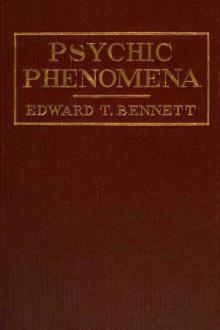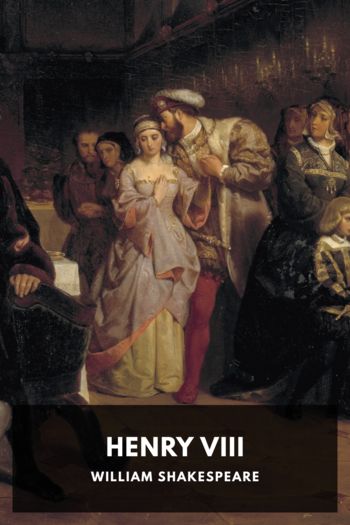Don Quixote by Miguel de Cervantes Saavedra (electric book reader TXT) 📕

Description
Don Quixote is a novel that doesn’t need much introduction. Not only is it widely considered the greatest Spanish literary work of all time, one of the greatest literary works in history, and a cornerstone of the Western literary canon, it’s also considered one of the first—if not the first—modern novels.
This Standard Ebooks edition is believed to be the first ebook edition of Don Quixote to feature a full transcription of translator John Ormsby’s nearly 1,000 footnotes. Ormsby as an annotator deftly explains obscure passages, gives background on the life and times of 1600s Spain, references decisions from other contemporary translators, and doesn’t hold back from sharing his views on the genius—and flaws—of Cervantes’ greatest work.
The story is of the eponymous Don Quixote, a country noble who, in his old age, reads too many chivalric romances and goes mad. After convincing his grubby servant, Sancho Panza, to join him as his squire, he embarks on an absurd and comic quest to do good and right wrongs.
Today Don Quixote’s two volumes are published as a single work, but their publication came ten years apart. Cervantes saw great success with the publication of his first volume, and appeared to have little desire to write a second volume until a different author wrote a spurious, inferior sequel. This kicked Cervantes into gear and he wrote volume two, a more serious and philosophical volume than the largely comic first volume.
Despite being written in 1605 and translated in 1885, Don Quixote contains a surprising amount of slapstick laughs—even for the modern reader—and narrative devices still seen in today’s fiction, including meta-narratives, frame narratives, and metafiction. Many scenes (like Quixote’s attack on the windmills) and characters (like Sancho Panza and Lothario) are so famous that they’re ingrained in our collective culture.
Read free book «Don Quixote by Miguel de Cervantes Saavedra (electric book reader TXT) 📕» - read online or download for free at americanlibrarybooks.com
- Author: Miguel de Cervantes Saavedra
Read book online «Don Quixote by Miguel de Cervantes Saavedra (electric book reader TXT) 📕». Author - Miguel de Cervantes Saavedra
“Frankness”—desengaño—more properly “undeceiving,” but there is no equivalent word in English. ↩
Perhaps the reader will think Sancho had some justification; an epidemic of verbosity, indeed, rages round the corpse of the unhappy Chrysostom; but it must be remembered verbosity was then rampant in literature and especially in Spanish literature, as all who know Guzman de Alfarache, The Picara Justina, Marcos de Obregon, and books of the same sort, will own; and if Cervantes did not wholly escape it, his fits of it were only occasional. ↩
The ballad (Cancionero de Romances, Antwerp, S.A., and Duran, No. 352) is that parodied by Don Quixote in Chapter II. “Britain” is, of course, Brittany; Lancelot’s father, King Ban, was a Breton. The idea of the “go-between” is derived from an Italian source, but the name Quintañona is Spanish; it means simply an old woman, one who has a quintal, or hundredweight of years on her back. The transformation of Arthur into a raven is also a Southern addition to the Arthurian legend. Cervantes ridicules the story in Persiles and Sigismunda. ↩
Proverb 106. ↩
“Nessum la mova
Che star non possa con Orlando prova.”
But Zerbino’s inscription was simply “Armatura d’Orlando Paladino,” and the quotation is merely the poet’s gloss upon it. ↩
Cachopín, or Gachupín, a word of Indian origin, and applied to Spaniards living in or returned from the Indies. Laredo is a seaport close to Santander, where also the Cachopins were numerous, as appears from a quaint inscription on one of the houses quoted by Bowle. ↩
Hartzenbusch in his anxiety for precision alters this, as he considers that El Toboso, being about seven leagues from Argamasilla, cannot be properly described as “near” it. ↩
It is hardly necessary to observe that these high mountains in the neighborhood of Argamasilla are purely imaginary. The nearest that could by any stretch of courtesy be called high would be those of the Toledo Sierra some sixty or seventy miles distant. ↩
This is one of the passages selected by Biedermann as specimens of blunders made by Cervantes, but by en memoria Cervantes does not mean to “commemorate,” but rather to “mark” or “signalize.” ↩
There is here a play upon the words desesperados, “despairing,” and no esperados, “not looked for:” many of the headings to the chapters contain some verbal conceit of this kind. ↩
The “Lay of Chrysostom” must not be judged of by a translation. The original is not so much a piece of poetry, as a fantasia in rhyme and an experiment in versification. Whether Italian or Spanish, the canzone or canción is from its style hard to translate into our matter-of-fact English, but the difficulty here is increased by the peculiarly complex stanza and intricate system of interlaced rhymes which Cervantes adopted, as well as by the inimitable rhythm and harmony of the lines. One peculiarity, borrowed, it may be, from Garcilaso, is that of a line with a medial rhyme to the termination of the preceding line, which produces a cadence that falls upon the ear like that of waves upon a distant shore. It might be possible to imitate the arrangement of rhymes, but to imitate the effect or reproduce the melody in our consonantal language would be an utter impossibility. ↩
“And the hoarse sobbing of the widowed dove.”
—Drummond of Hawthornden↩
The owl was the only bird that witnessed the Crucifixion, and it became for that reason an object of envy to the other birds, so much so that it can not appear in the daytime without being persecuted. ↩
Betis—i.e. the Guadalquivir. ↩
It was the corpse of Servius Tullius that was so treated by his daughter Tullia, the wife of Tarquin, but Cervantes followed an old ballad in the Flor de Enamorados, which has, Tullia hija de Tarquino. ↩
I.e. of Yanguas, a district in the north of Old Castile, near Logroño. ↩
Used by the carriers in loading their beasts to prop up the pack on one side while they are adjusting the balance on the other. ↩
An allusion probably to the story of Diego Pérez de Vargas, “the pounder.” (See Chapter VIII) ↩
Sancho’s blunder in the name of Fierabras is droller in the original, as he says, del feo Blas, “of the ugly Blas.” ↩
There is no account of any such flogging in the Amadís. ↩
Tizon was the name of one of the Cid’s two famous swords; the word was altered into Tizona to suit the trochaic rhythm of the ballads. It means simply “brand.” ↩
In this characteristic comment of Sancho’s, Hartzenbusch corrects caballero andante—“knight-errant”—into caballeria andante—“horse-errant” (entirely overlooking the también—“too”), and with profound gravity reminds us that Rocinante is a horse. Mr. J. P. Collier’s “old corrector” in the 1632 folio Shakespeare could hardly do worse than this. The play upon the words sin costas and sin costillas cannot be rendered literally; sin costillas—“without ribs”—means also in popular parlance bankrupt, “cleaned out.” ↩
Thebes; but that of the hundred gates was the Egyptian, not the Boeotian Thebes, which is the one here referred to. ↩
The grave drollery of Sancho’s matter-of-fact reply is lost in translation, inasmuch as in Spanish “to go





Comments (0)